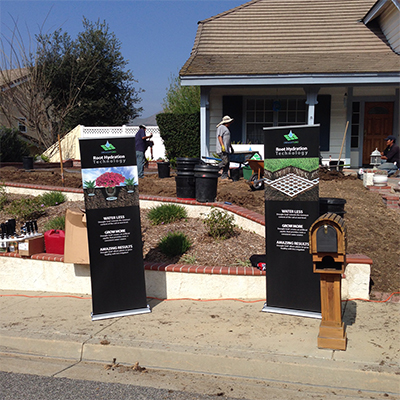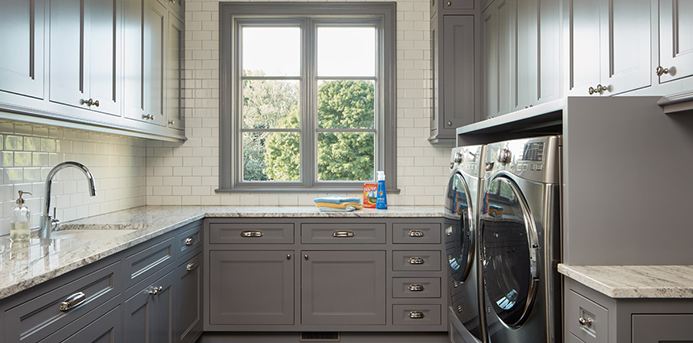California’s crippling five-year drought may finally be over for now, but it made national headlines and reminded us how important water conservation is not only globally, but also at the individual level. With water currently being consumed at an unsustainable rate, consumers, appliance manufacturers and governments are looking to technology for solutions that save water without compromising performance.
Californians regularly face a recurring climate crisis: drought.
The most recent drought has lasted six years, impacting much of the state severely and requiring lawmakers and residents to respond with measures from disallowing lawn-sprinkler use on certain days to ripping out lawns in their entirety and replacing them with plastic turf. Thanks to an exceptionally wet winter, the drought seems to finally be ending, but experts warn that even with record-breaking rain and snowfall in 2017, there’s still not going to be enough water to sustain Californians’ use in the longer term. They say another drought is inevitable, so the state will need to continue to prepare and respond accordingly.
During this most recent drought, Janet Rich, who lives in Thousand Oaks, California, didn’t want to lose the natural beauty of her real grass front lawn. So she looked online for an alternative, and found one: Drought Grid, a drip system built under her lawn that has allowed her to go sprinkler-free.
“Many of the homes in my neighborhood have changed to pebbles or Astroturf because of the drought and the increased price of water,” Rich says. “I knew I didn’t want that, but when the water started going up, I started looking for alternatives. And this is absolutely gorgeous.”
Rich isn’t sure exactly how much money she’s saving off her water bill each month, but she’s happy to be saving the environment anyway.
More and more, people throughout the country — even in the Midwest, where water is plentiful in comparison to California — are realizing the need to cut down on water consumption, says Matt Bentley, vice president of Novak and Parker Home Appliance in Mount Prospect.
“The rate at which we consumed water for decades is categorically and fundamentally unsustainable; even more so when you account for the population’s growth expectations for the next 30 years,” he says.
That means consumers, appliance manufacturers and even state and local governments are trying to find ways to lessen the amount of water used in the average home, Bentley says.
Balancing Efficiency and Effectiveness
Although conservation is key in many homes, there’s a catch: People expect both premium features in their appliances — “smart connectivity, active interfaces, premium designs, superior installation qualities and, of course, energy-efficient and water-conscious technologies,” Bentley says — all without giving up performance.
“High-efficiency” top-loading washing machines are a great example of how necessary that balance is. In 2010-11, sales surged (partially thanks to legislated stimulus incentives) on the machines, which use less water but have longer cycle times and lacked the traditional “wash action” people were used to seeing to make them feel their clothes were being adequately cleaned, Bentley says. That dip in consumer confidence also meant a huge drop in sales.
But manufacturers are taking initiative to make high-efficiency washers into a dream appliance for water conservationists.
In fact, a combination of several new technologies may well be the answer to the question of how to best conserve water at home.

For water-saving showerheads, faucets and toilets, homeowners can turn to Kohler/Kallista appliances, says Doug Reynolds of Reynolds Architecture, Design & Construction in Northfield. Kohler/Kallista conforms to CalGreen standards, which are the strictest in the country. DTV (digital thermostatic valve) technology in these appliances also allows the homeowner to program the length of the shower, making it harder to take a very long shower without realizing it.
These high-end appliances make conserving water easier, Reynolds says.
Technology as a Gateway to Conservation
Still, having the technology to conserve water probably isn’t enough by itself to make the largest impact.
“It’s important for people to understand that water is not a limitless resource,” Reynolds says. “People’s personal habits can play a large role in water conservation.”
Running dishwashers and washing machines only when they’re full and turning off water while brushing teeth or washing hands are easy ways to conserve water at home.
Even the actions of the government play a part in water conservation in individual homes. Although the effectiveness of federal conservation legislation is uncertain under the new administration, such legislation is a game-changer when it comes to demand for water-friendly appliances.
“When the government legislates energy-efficiency incentives for manufacturers (the coveted Energy Star badges), and the manufacturer can meet consumer expectations for reduced water consumption and elevated performance, the increase in market share for water-conserving appliances will undoubtedly continue,” Bentley says.
Established by the U.S. Environmental Protection Agency in 1992, the Energy Star program was designed to help businesses and people save money while simultaneously protecting the environment through use of the highest energy-efficiency technology available.

For water conservationists, Energy Star-certified appliances could include anything from a washing machine to a dishwasher to a pool pump, all with a focus on necessary and appropriate use of water.
A Solution Indoors and Outdoors
Water conservation doesn’t have to stop inside the home, as is obvious from Rich’s upgraded yard and the variety of Energy Star-certified outdoor conservation tools available. Indeed, there are several new irrigation technologies to help conserve water in yards and gardens as well.
Much like Nest transformed the way thermostats can help conserve energy, Rachio uses rainfall data and other weather forecasting information to control whether and for how long sprinklers run so water isn’t wasted. It also allows the homeowner to monitor and adjust sprinkling systems from anywhere via a smartphone app.
“It’s an easy process — you can tell the company about your plants, soil, sun and exposure for each zone of the property,” Reynolds says. “Rachio will calculate watering cycles and proper amount of water and runoff to provide maximum water conservation.”
Or a conservationist could go all out, like Rich did, and install the Drought Grid technology in the yard, garden and any pots.
Created by Montgomery Knox, a certified nurseryman who owns and operates Malibu Coast Nursery and Landscape, the Drought Grid uses a series of “root moisture reservoirs,” which are made of recycled PVC pipes that collect water from irrigation or rain. The grid acts, essentially, as a man-made aquifer, giving plants a consistent source of water.

Extra water flows through open sections of the grid and down into the water table, ensuring that the extra water is useful to the surrounding environment. The grid, combined with drip tubing, means Rich no longer has to use sprinklers at all to water her lawn. It’s all done naturally or through the much more water-efficient underground system.
Rich says she did have an up-front investment of a couple thousand dollars to have the grid installed in the front yard and to have her backyard changed so it’s primarily potted plants around a cement patio that leads to her pool. But even those plants — including an orange tree — use smaller versions of the grid system to stay hydrated while conserving water.
“Nobody really needs a lawn — it’s a total waste of water,” Rich says. “It’s just that I have one, so now I have one that doesn’t waste water. It holds the water it needs while it lets the water it doesn’t need go through to the earth.”

